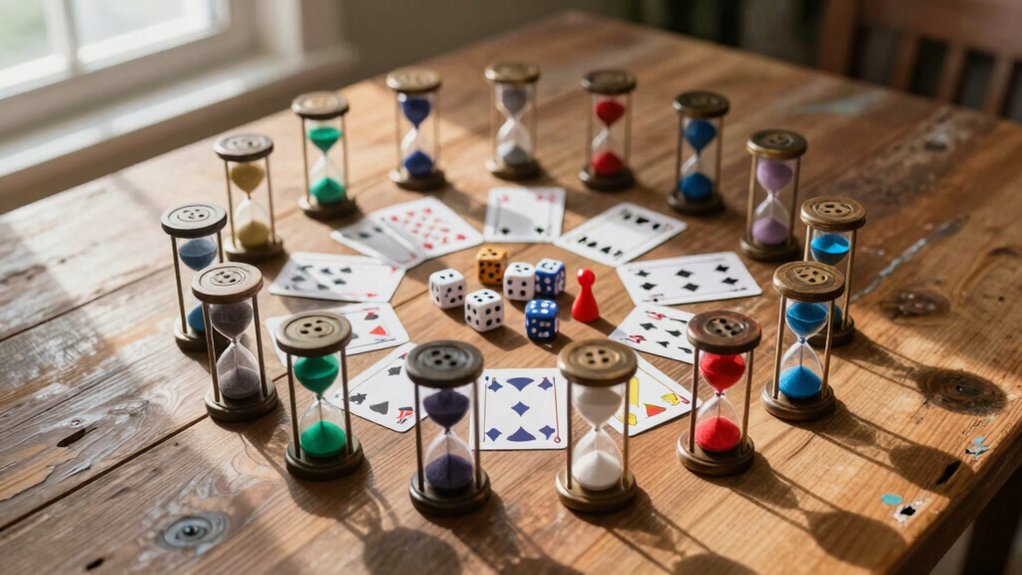Are you looking for ways to help your team or group develop their problem-solving skills?
Group activities can be an effective tool for teaching problem-solving methods and encouraging collaboration.
In this article, we’ll explore the benefits of group activities for fostering problem-solving, the different types of activities that can help enhance problem-solving, and strategies for facilitating effective group activities.
With the right approach, you can use group activities to encourage creative thinking and deeper understanding of complex issues.

Benefits of Group Activities for Problem-Solving
Group activities can help foster problem-solving by working together to come up with creative solutions and bouncing ideas off each other to make them even better.
Brainstorming sessions are a great way for groups to collaborate and get everyone’s input on the issue at hand. It is also an opportunity for members of the group to think outside of the box and find new perspectives on how to solve a problem.
Role playing scenarios can also be used as a tool in group activities, allowing people to take on different roles in order to explore situations from multiple angles.
Group activities bring out unique strengths that all individuals have, which could lead to unexpected solutions or discoveries during problem-solving. They also give people a chance to practice communication skills, such as active listening and expressing ideas clearly.
Working through issues in a team setting allows participants the opportunity to explain their thoughts thoroughly while receiving feedback from others in the group. This could lead not only towards better understanding but also towards more effective strategies created together within the team environment.
Group activities can provide an invaluable platform for solving problems since they incorporate different levels of collaboration among its members. People are able to come together, learn from each other, build upon one another’s ideas and ultimately develop innovative ways of approaching challenges that would otherwise be difficult when done alone.
By engaging in meaningful discussions about potential solutions, it is possible for participants within these settings become more confident when tackling complex issues while being able to appreciate diverse opinions along the way.
Overall, group activities allow individuals within teams or organizations create an enriching experience where everyone comes together and contributes their knowledge and skillset towards finding successful resolutions for problems that occur in everyday life.
Types of Group Activities to Enhance Problem-Solving
You can use collaborative exercises to boost your problem-solving skills! Group activities are a great way to build on individual strengths and come up with creative solutions to difficult challenges.
There are many types of group activities that can be used to enhance problem-solving, including:
- Brainstorming techniques – Working together as a team allows for diverse ideas and encourages out-of-the-box thinking.
- Role playing scenarios – Pretend scenarios allow participants to practice communication and conflict resolution in a safe setting.
- Creative games – Games like charades or Pictionary can help members think outside the box and come up with unusual solutions.
These activities not only foster problem solving but also help develop teamwork, communication, and leadership skills among group members. By engaging in constructive dialogue in a safe environment, teams become more effective at finding innovative ways of tackling problems.
With the right group activity, individuals can learn how their combined efforts improve decision making—and ultimately lead to better problem-solving outcomes.
Strategies for Facilitating Effective Group Activities

By engaging in collaborative exercises, you can unlock the potential of your team to come up with creative solutions. When facilitating group activities to foster problem-solving, it’s important to consider how best to set up an environment conducive for positive team dynamics.
One way is to start with ice breakers and warm-up activities that get people talking and interacting. This helps build trust among the team members and allows them to take more risks when brainstorming ideas together.
It’s also important to ensure everyone feels heard by giving each person a chance to speak and be active in the discussion. You can do this by encouraging open dialogue, asking questions, and using different methods like role-playing or simulations that allow for multiple perspectives on the issue at hand.
Working together as a group gives members an opportunity to learn from each other’s experiences and broaden their understanding of the topic.
When designing group activities, make sure there are specific goals in mind so members know what they are working towards. Break down complex problems into smaller steps that can be tackled one at a time so participants feel empowered by their successes along the way.
Finally, provide feedback throughout the process so everyone remains focused on finding solutions instead of getting stuck in old patterns of thinking. With these strategies in place, you will create an atmosphere where collaboration flourishes and problem-solving skills thrive!
Conclusion
You’ve seen how group activities can provide a collaborative setting to foster problem-solving. They can help people to think outside the box, come up with creative solutions, and develop their communication skills.
With the right strategies in place, you can facilitate effective group activities that will help your team to hone their problem-solving abilities. So don’t hesitate – get out there and give it a try!




Leave a Reply